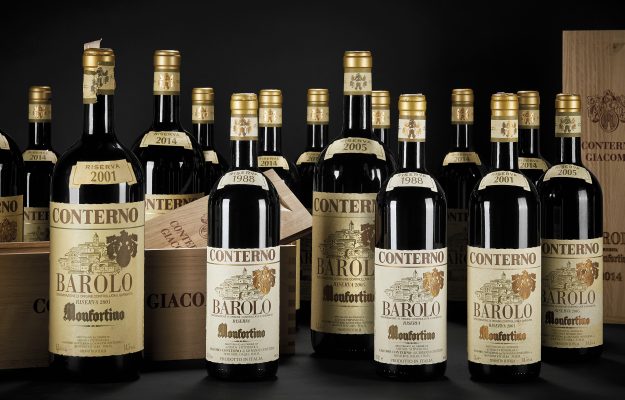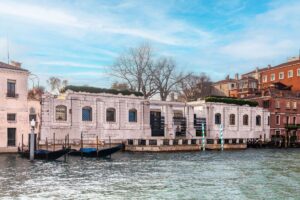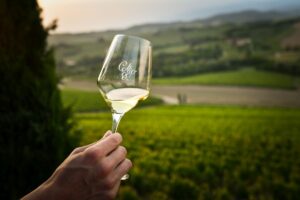Tracing the historic 1855 hierarchical and qualitative classification of the great wines of Bordeaux, the Liv-ex, the reference index for the secondary fine wine market, has been lining up the world’s greatest wines every two years since 2009, divided hierarchically into five bands, following only one requirement: price. A constantly revised and updated classification, which, since 2017, has decided to open its doors to more and more territories and countries, picking for the “2023 Liv-ex Classification” among wineries that - in the period July 2022/June 2023 - have recorded at least 12 trades of five or more vintages, taking into consideration, however, only the last ten physical vintages on the market, starting with 2020, which is why the number of labels has dropped from 349 in 2021 to 296 today.
There are nine countries in the rankings, with a 40% growth in the number of Spanish labels (7 in all), a doubling for Chilean labels (4) and a decline for those of France (-12.9%, 195 in all), Italy (-21.7% compared to 2021, for a total of 65 labels), the USA (-50%, for 11 wines in the classification), Australia (-16.7%, 5 in all) and Portugal (-50%, 3 wines in all). Argentina returns to the rankings, with five wines, and Switzerland enters, with one wine, in place of Germany. Of the 65 Italian labels, 8 are in the first bracket, 25 in the second, 11 in the third, 16 in the fourth and 5 in the fifth. Among the regions, Tuscany leads, with 38 wines in the “2023 Liv-ex Classification”, followed by Piedmont, at 25, and Veneto and Abruzzo, with one label each. Narrowing the analysis to the different appellations, on the podium are Barolo, with 23 wines in the Liv-ex classification, Toscana Igt, with 17 labels, and Brunello di Montalcino, with 13 wines (to which a Rosso di Montalcino should be added), while 5 are Bolgheri-Sassicaia wines.
As many as three wineries are able to bring four different labels into the “2023 Liv-ex Classification”: Frescobaldi (Masseto, Ornellaia, Luce della Vite and Le Serre Nuove dell’Ornellaia), Giacomo Conterno (Barolo Monfortino Riserva, Barolo Francia, Barolo Cerretta and Barbera d’Alba Francia) and Vietti (Barolo Villero Riserva, Barolo Ravera, Barolo Rocche di Castiglione and Barolo Lazzarito). At three are Antinori (Solaia, Tignanello and Bolgheri Guado al Tasso) and ColleMassari Wine Estates (Grattamacco and Poggio di Sotto, with Brunello di Montalcino and Rosso di Montalcino).
With two labels there are as many as 11 producers in the “2023 Liv-ex Classification”: Biondi-Santi (Brunello di Montalcino and Brunello di Montalcino Riserva), Castello dei Rampolla (D’Alceo and Sammarco), G. D. Vajra (Barolo Bricco delle Viole and Barolo Ravera), Casanova di Neri (Brunello di Montalcino Tenuta Nuova and Brunello di Montalcino Cerretalto), Poggio di Sotto (Brunello and Rosso di Montalcino), Valdicava (Brunello di Montalcino Riserva Madonna Piano and Brunello di Montalcino), Bruno Giacosa (Barolo Falletto Vigna Le Rocche Riserva and Barolo Falletto), Bibi Graetz (Toscana Rosso and Colore Rosso), Tua Rita (Redigaffi and Giusto di Notri), Chiara Boschis - E. Pira e Figli (Barolo Cannubi and Barolo Mosconi) and Fontodi (Chianti Classico Vigna del Sorbo Gran Selezione and Colli della Toscana Centrale Flaccianello della Pieve).
Between June 2021, when the last classification came out, and June 2023, the Liv-ex 1000 grew by 19%, so the price bands for each level were adjusted accordingly. Going up the pyramid of the “2023 Liv-ex Classification”, the lowest price band, the fifth, includes wines ranging from 364 to 455 pounds per case. For Italy, as mentioned, there are five labels: Rosso di Montalcino Poggio di Sotto (447 pounds per case), Toscana Giusto di Notri Tua Rita (444 pounds), Toscana Oreno Sette Ponti (429 pounds), Barbera d’Alba Francia Giacomo Conterno (426 pounds), and Bolgheri Rosso Le Serre Nuove dell’Ornellaia Frescobaldi 383 pounds. A significant portion (61%) of the labels in the fifth category are from France, including seven from Bordeaux and five from the Rhone.
The fourth segment includes a total of 48 wines, which fall in the price range of £456 to £637: France leads with 24 wines, followed by Italy with 16, Portugal with three, Australia with two and one each from Spain, the United States and Argentina. The Italian labels are, in order of listing: Barolo Bricco Boschis Cavallotto (£631), Val d'Arno di Sopra Galatrona Petrolo (£624), Bolgheri Superiore Grattamacco (£612), Barolo Bric Fiasc Paolo Scavino (£606), Toscana Saffredi Fattoria Le Pupille (£599), Barolo Ravera G. D Vajra (£594), Brunello di Montalcino Montosoli Altesino (£589), Brunello di Montalcino Pertimali - Livio Sassetti (£581), Brunello di Montalcino Pianrosso Ciacci Piccolomini d’Aragona (£576), Toscana Rosso Bibi Graetz (£574), Toscana Siepi Mazzei (£559), Chianti Classico Vigna del Sorbo Gran Selezione Fontodi (£550), Brunello di Montalcino Conti Costanti (£516), Toscana Sammarco Castello dei Rampolla (£512), Barbaresco Ovello Riserva Produttori del Barbaresco (£496) and Barolo Gavarini Chiniera Elio Grasso (£465).
The third segment - from 643 to 984 pounds - is composed mainly of French and Italian wines, with Bordeaux maintaining its leadership, with 18 labels, but it is also the segment in which the largest number of South American wines are placed, with three from Argentina and two from Chile. For Italy: Trebbiano d’Abruzzo Valentini (£965), Bolgheri Guado al Tasso Antinori (£965), Toscana D’Alceo Castello dei Rampolla (£932), Barolo Pira Roagna (£872), Barolo Vigne Luciano Sandrone (£872), Barolo Cannubi Chiara Boschis - E. Pira e Figli (£830), Brunello di Montalcino Tenuta Nuova Casanova di Neri (£797), Brunello di Montalcino Valdicava (£738), Toscana Luce della Vite Tenuta Luce - Frescobaldi (£730), Barolo Bricco delle Viole G. D Vajra (£649) and Barolo Mosconi Chiara Boschis - E. Pira e Figli (£643).
The second segment is always the largest, with a total of 115 wines, ranging in price from £1,002 and £3,640 per case. It is, by necessity, also the band with the highest level of diversity, with wines from Chile, the United States, Italy, France, Spain, Australia, Argentina and Switzerland. There are 25 new entries, 13 of them from Burgundy, the most represented territory, thanks to huge growth on the secondary market in the past two years, so much so that today there are no less than 1,962 labels of Burgundy wines traded on Liv-ex. There are 25 Italians: Brunello di Montalcino Cerretalto Casanova di Neri (£3,149), Barolo Bartolo Mascarello (£3,096), Brunello di Montalcino Madonna delle Grazie Marroneto (£3,036), Barolo Villero Riserva Vietti (£2,824), Toscana Solaia Antinori (£2,690), Sassicaia Tenuta San Guido (£2,558), Barolo Ravera Vietti (£2,396), Barolo Rocche di Castiglione Vietti (£2,305), Barolo Francia Giacomo Conterno (£2,290), Toscana Le Pergole Torte Montevertine (£2,132), Amarone della Valpolicella Monte Lodoletta Dal Forno Romano (£2,120), Barolo Cerretta Giacomo Conterno (£2,061), Bolgheri Ornellaia Frescobaldi (£1,729), Barbaresco Gaja (£1,636), Brunello di Montalcino Riserva Madonna Piano Valdicava (£1,542), Toscana Colore Rosso Bibi Graetz (£1,527), Toscana Redigaffi Tua Rita (£1,485), Brunello di Montalcino Poggio di Sotto (£1,453), Toscana Messorio Le Macchiole (£1,432), Barolo Falletto Bruno Giacosa (£1,366), Brunello di Montalcino Biondi-Santi (£1,343), Toscana Tignanello Antinori (£1,324), Barolo Lazzarito Vietti (£1,271), Colli della Toscana Centrale Flaccianello della Pieve Fontodi (£1,191) and Brunello di Montalcino Cerbaiola Salvioni (£1,124).
Finally, the top of the “2023 Liv-ex Classification”, the first segment, where there are 63 wines from five countries. The lion’s share, with 47 wines, goes to France: Burgundy, despite the 10.3% drop in the Burgundy 150 since the beginning of the year, leads the way with 25 wines (40% of the total), followed by Bordeaux and Champagne (which has almost half of its labels in the first band) with 10 and Rhône with 2. The top four positions in terms of average price are all occupied by Burgundy wines, and Domaine de la Romanée-Conti’s Romanée-Conti Grand Cru is confirmed as the most expensive wine, with a price per case of £234,214. There are 8 Italian wines in the highest price range: Barolo Piè Franco Cappellano (£10,492), Barolo Monfortino Riserva Giacomo Conterno (£9,943), Toscana Masseto Frescobaldi (£7,327), Toscana Sangiovese Soldera Case Basse (£5,835), Barolo Monvigliero Comm. G. B. Burlotto (£4,199), Brunello di Montalcino Riserva Biondi-Santi (£3,920), Barolo Brunate Giuseppe Rinaldi (£3,893) and Barolo Falletto Vigna Le Rocche Riserva Bruno Giacosa (£3,846).
Copyright © 2000/2025
Contatti: info@winenews.it
Seguici anche su Twitter: @WineNewsIt
Seguici anche su Facebook: @winenewsit
Questo articolo è tratto dall'archivio di WineNews - Tutti i diritti riservati - Copyright © 2000/2025








































































































































































































